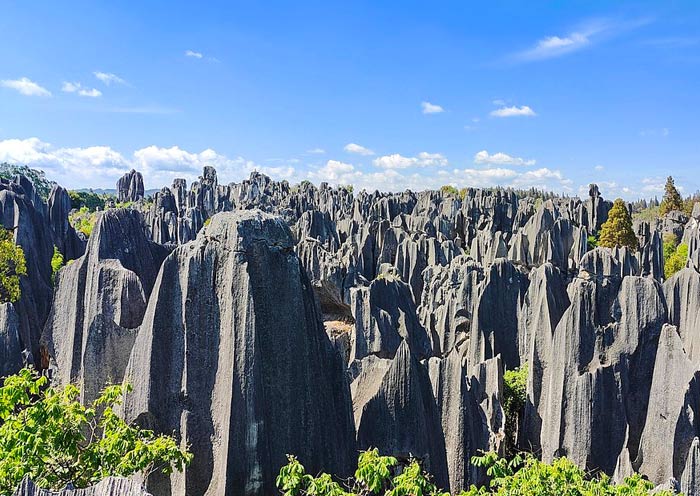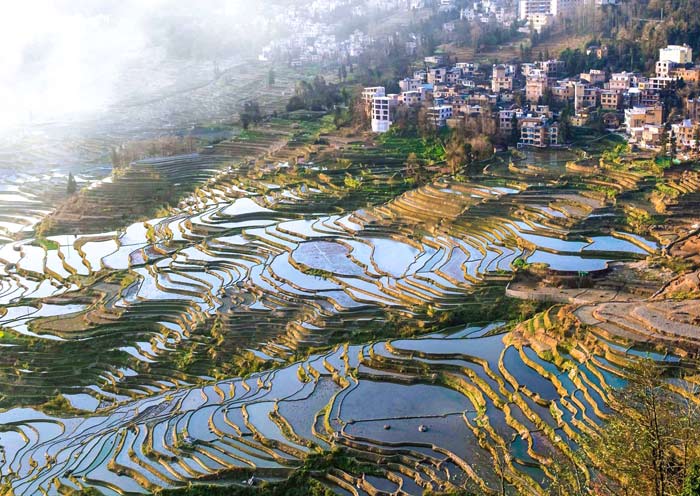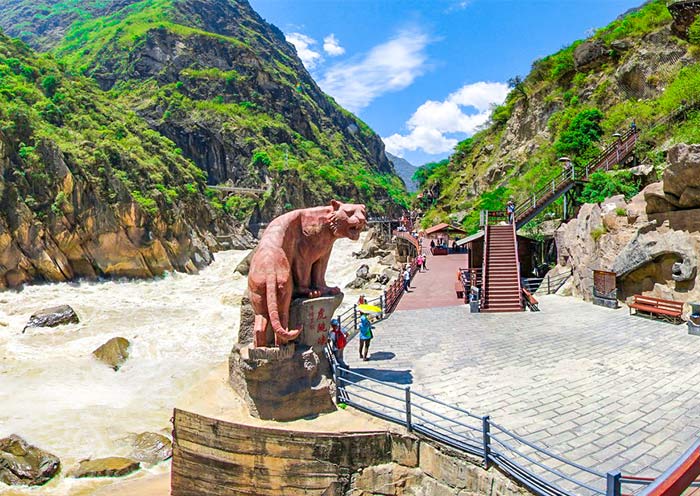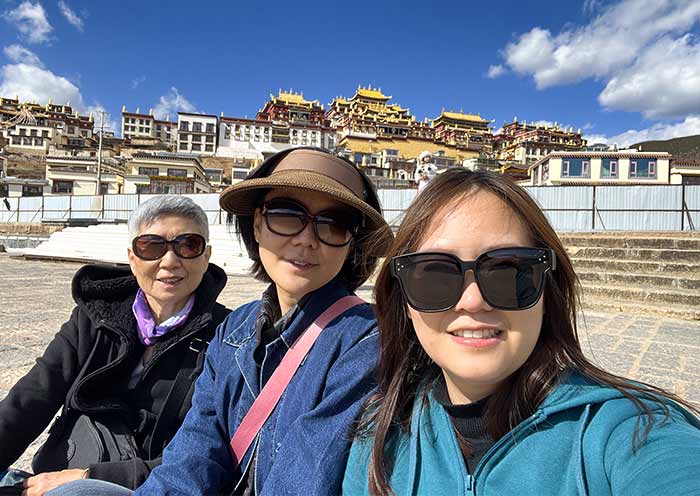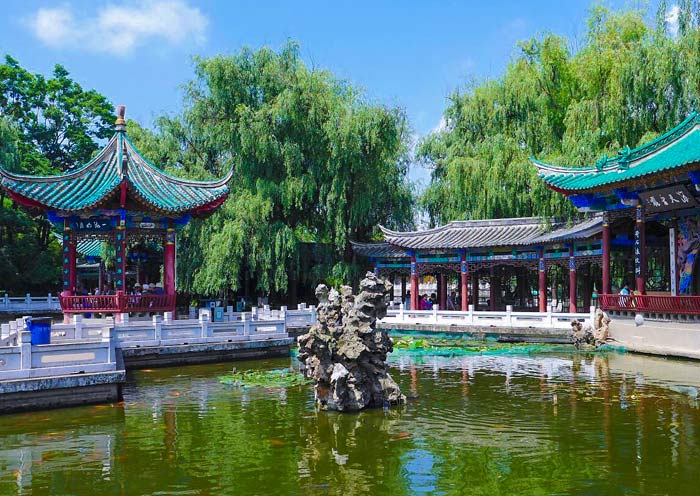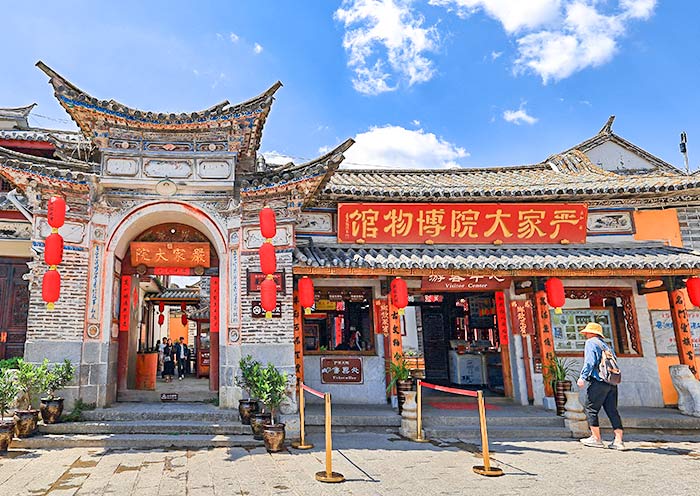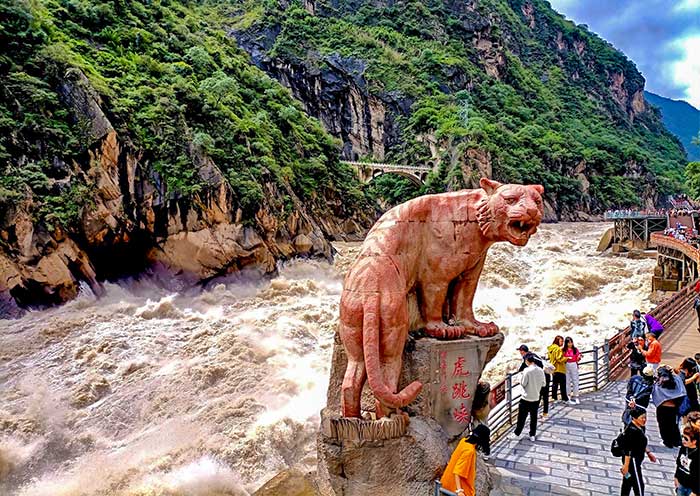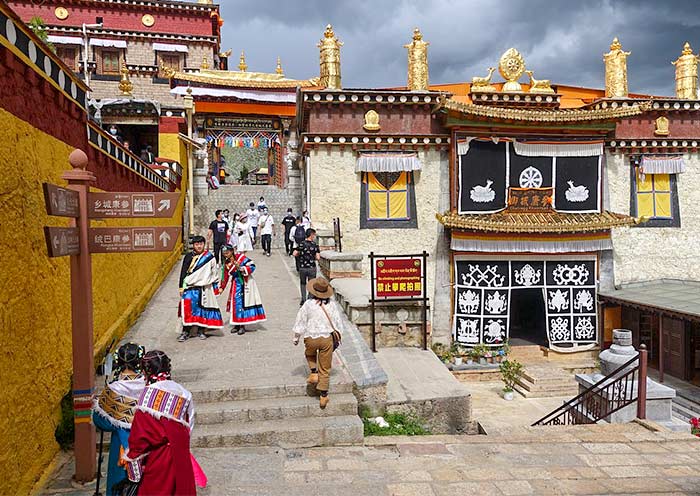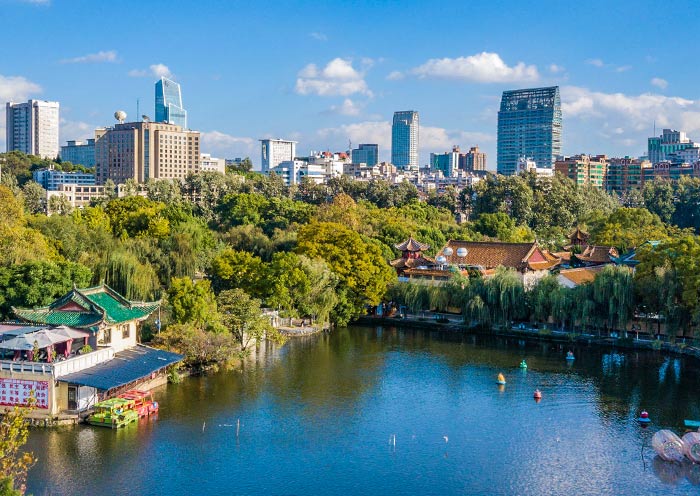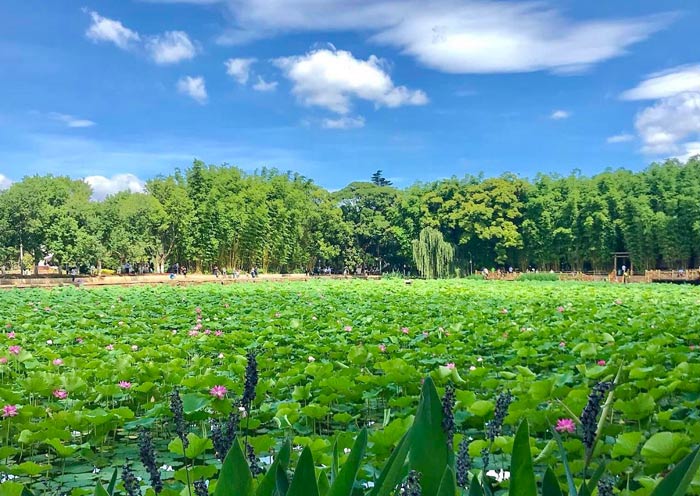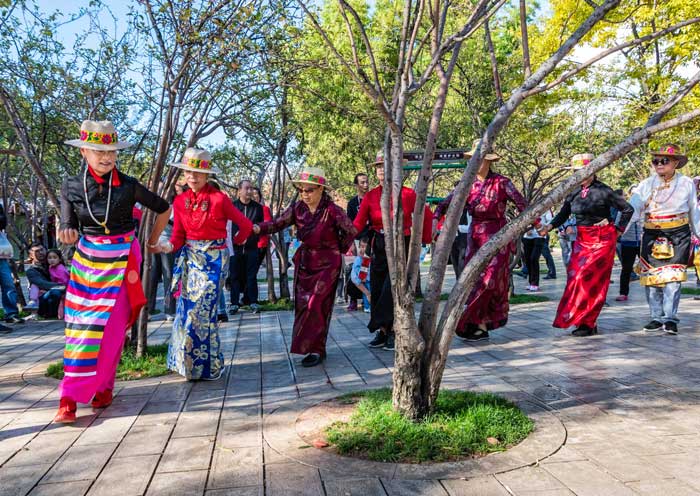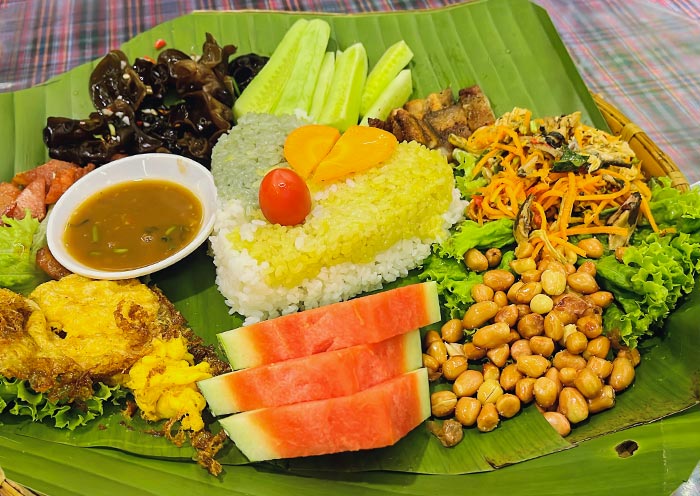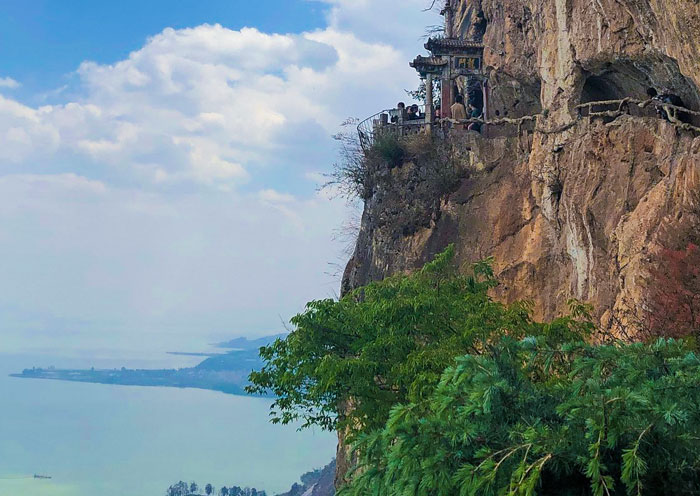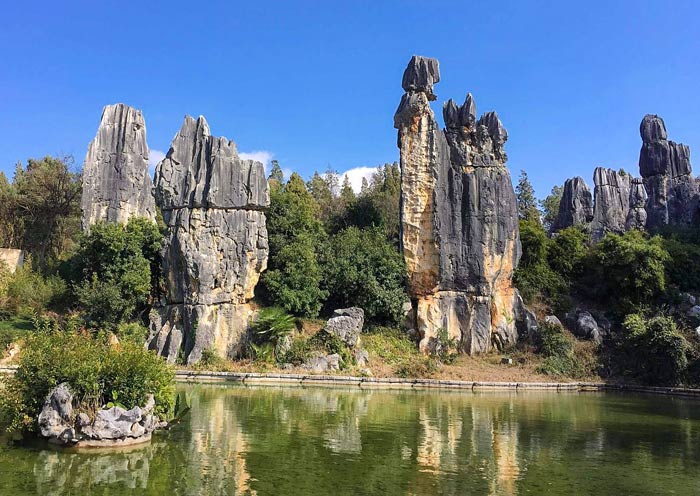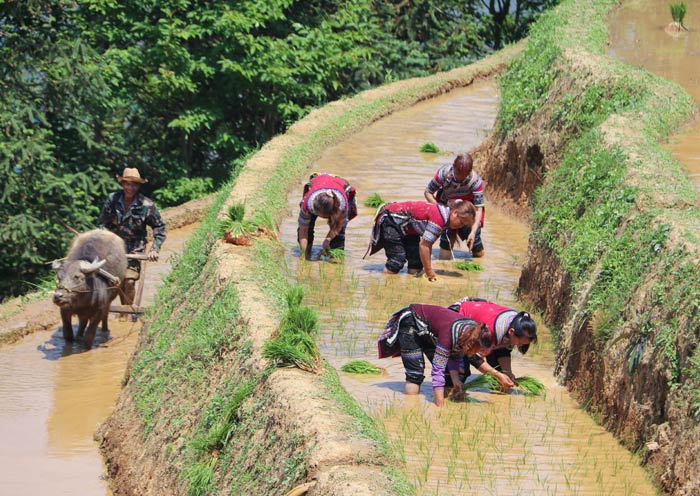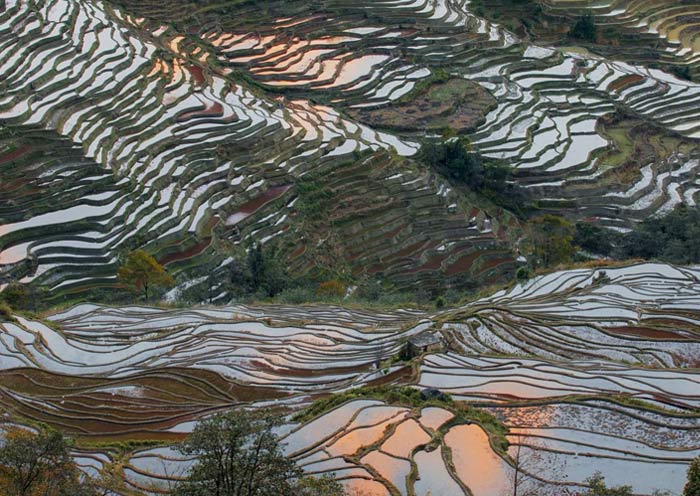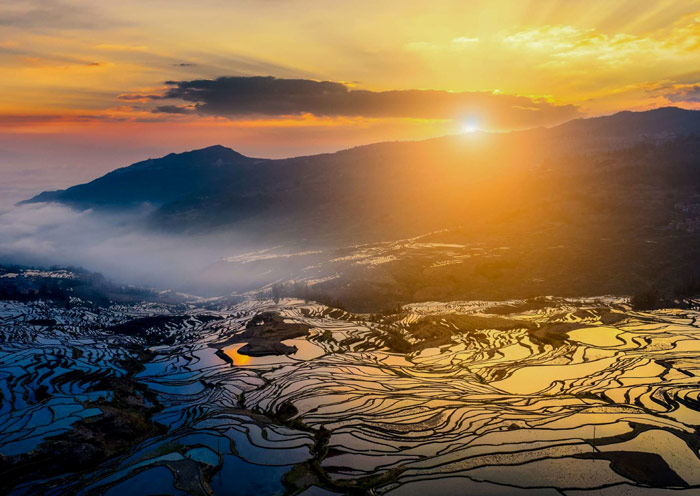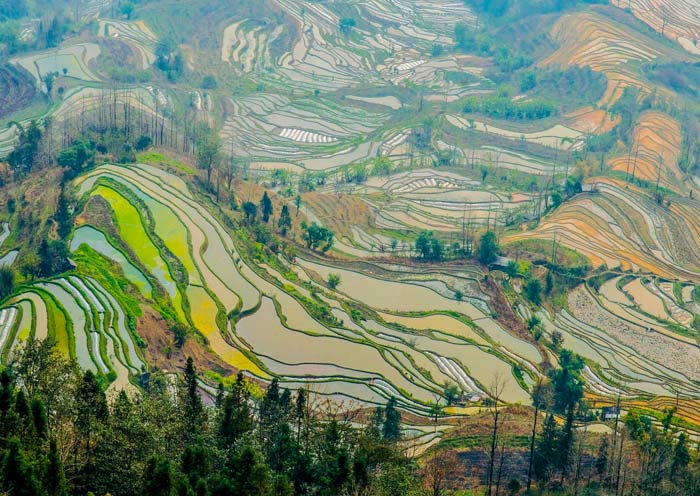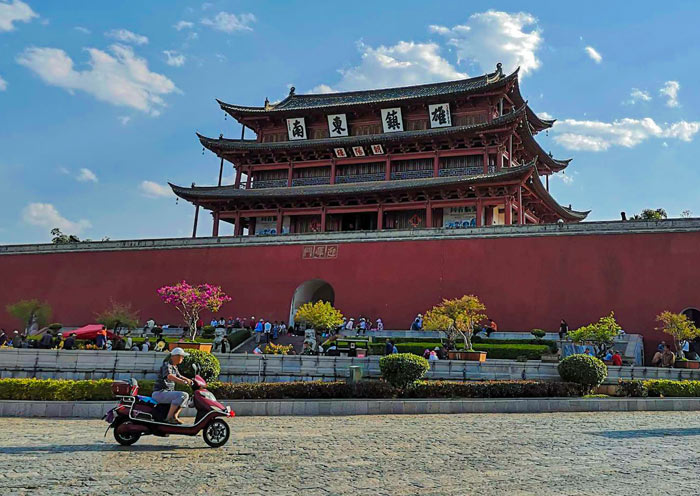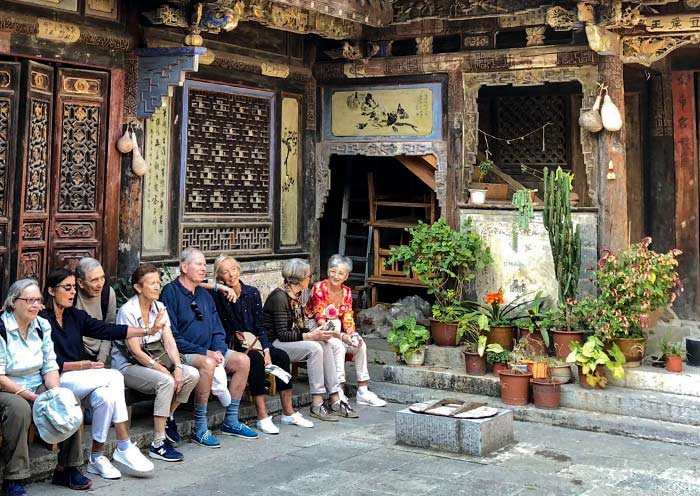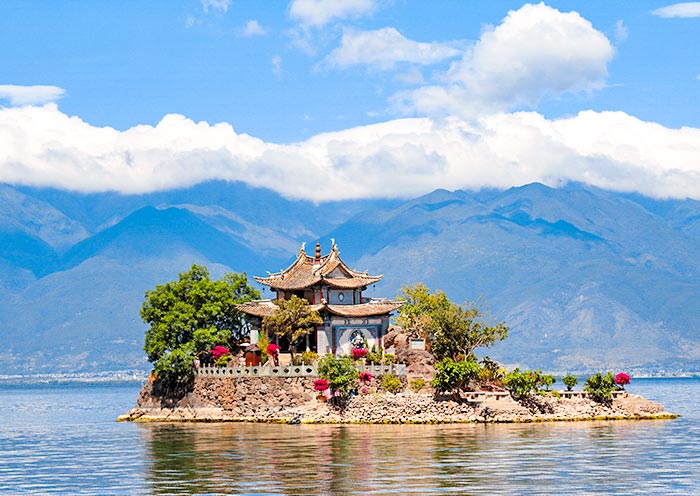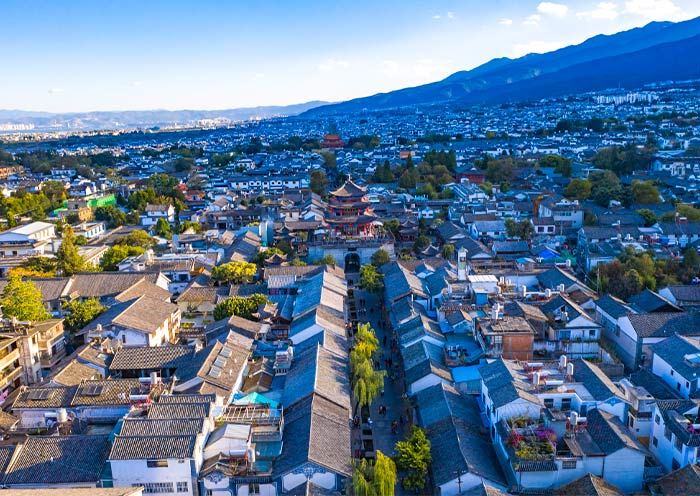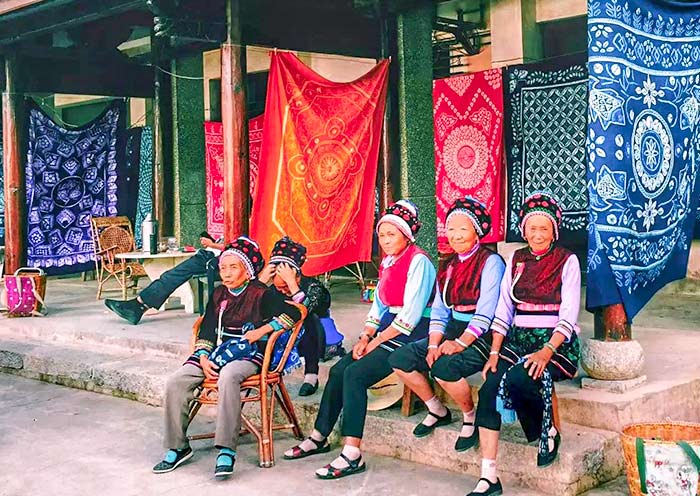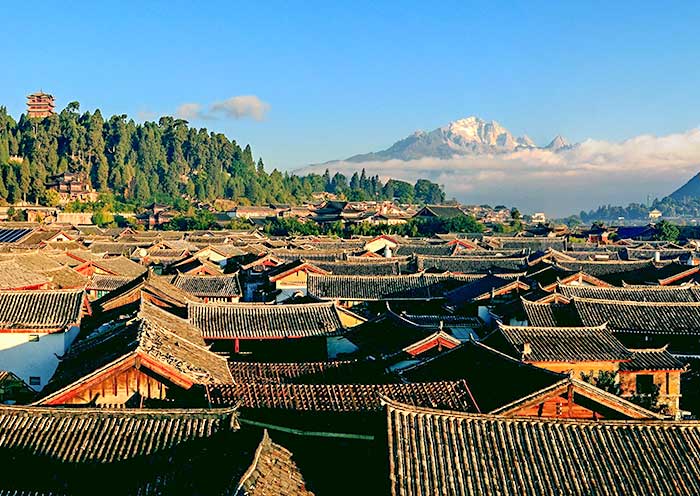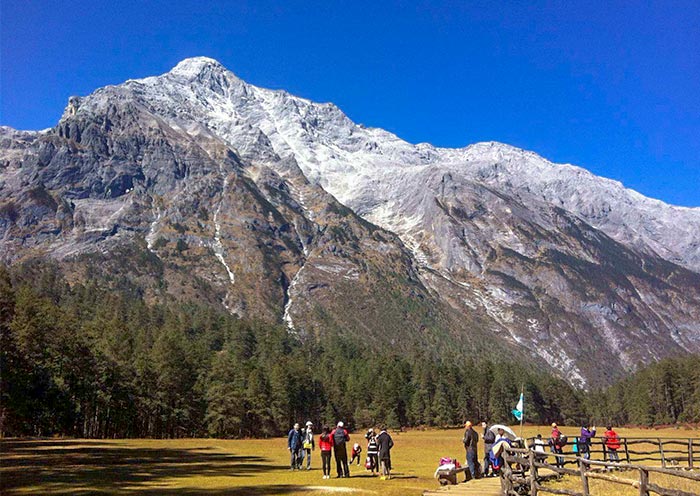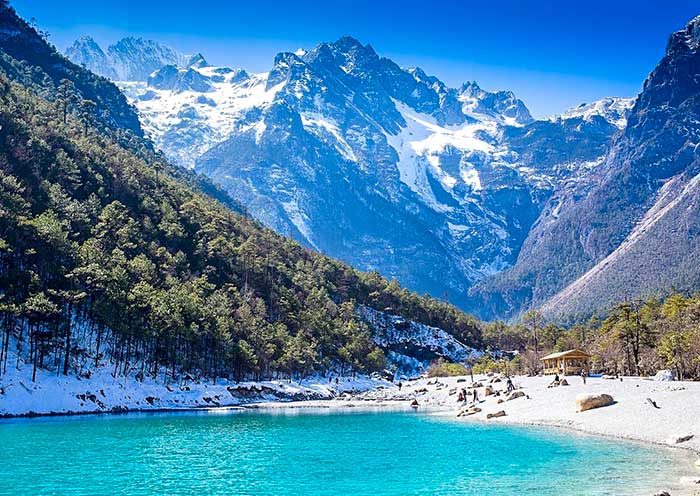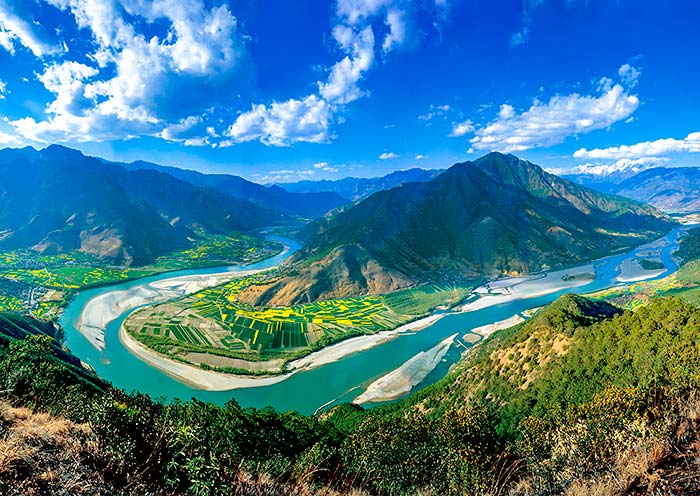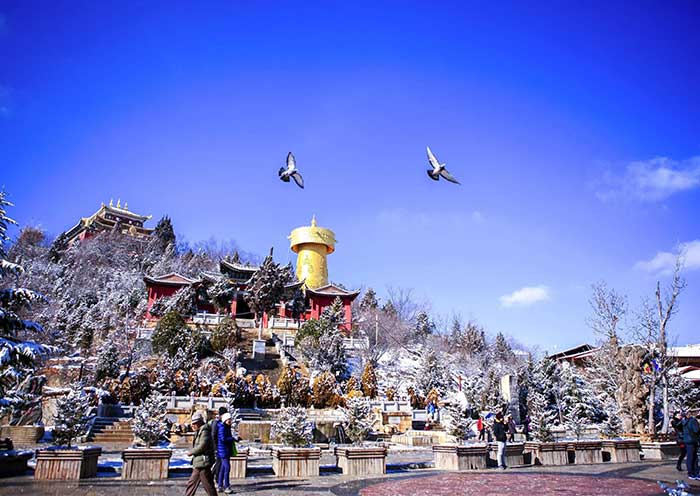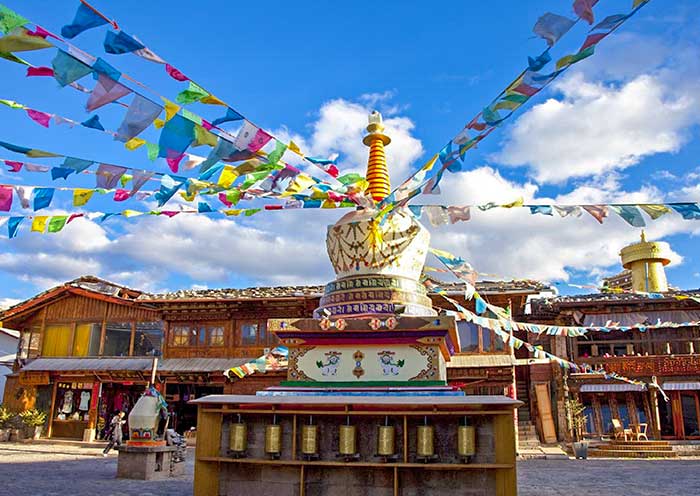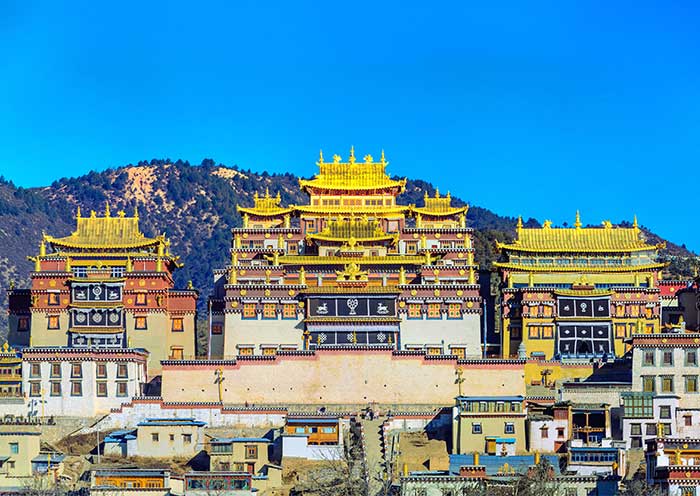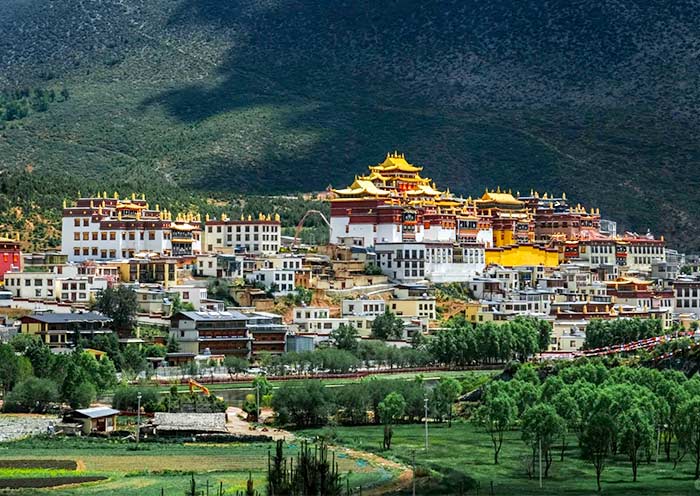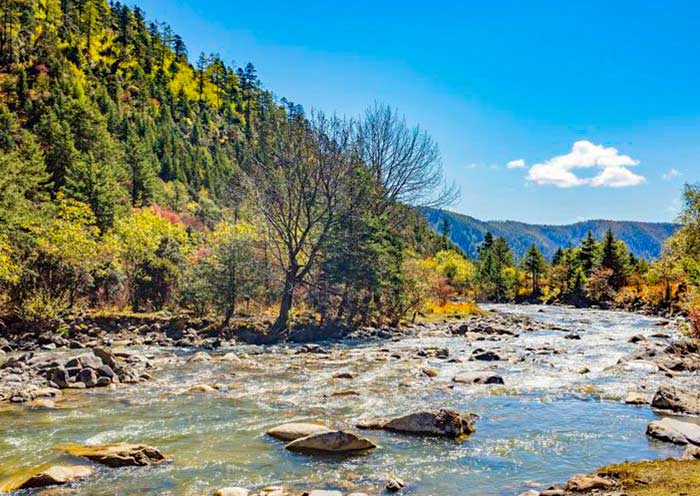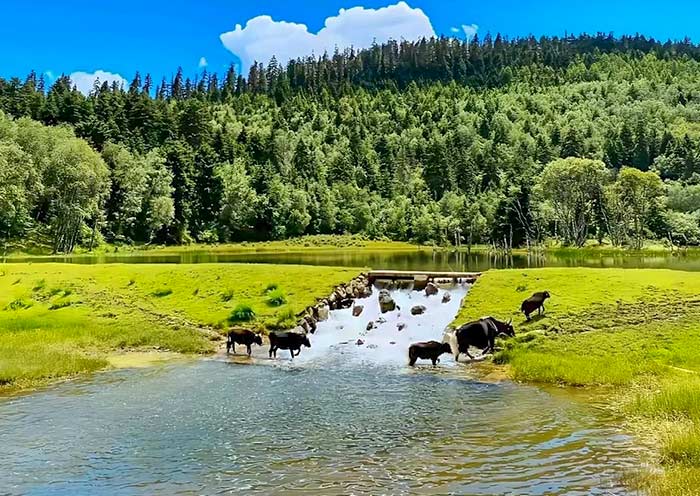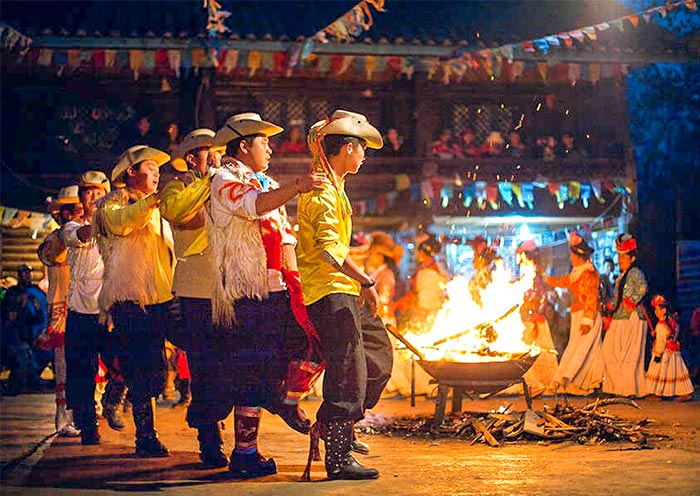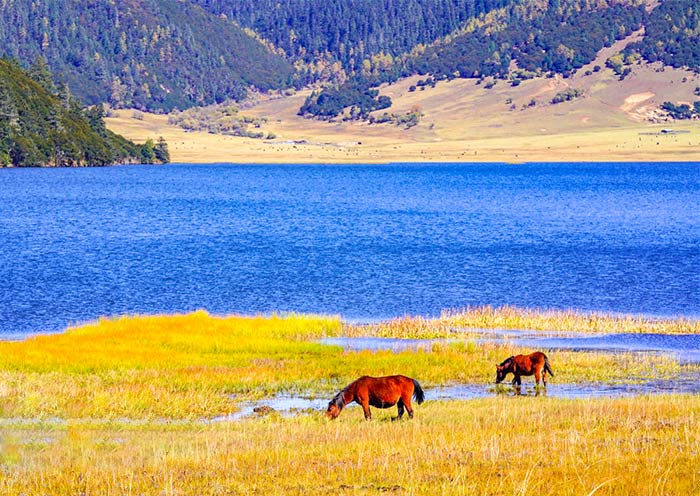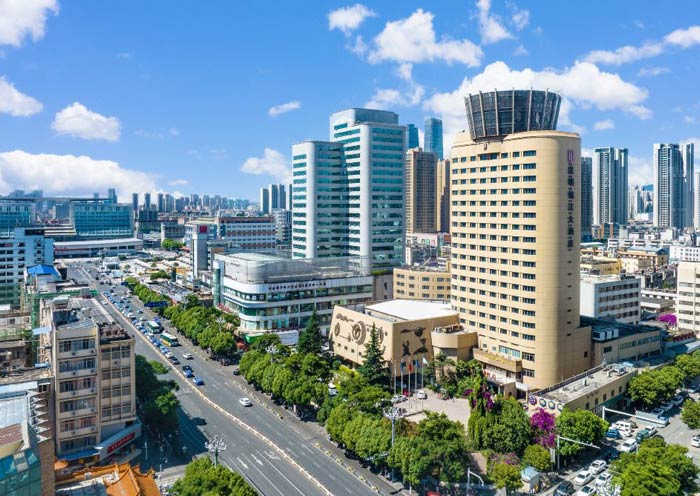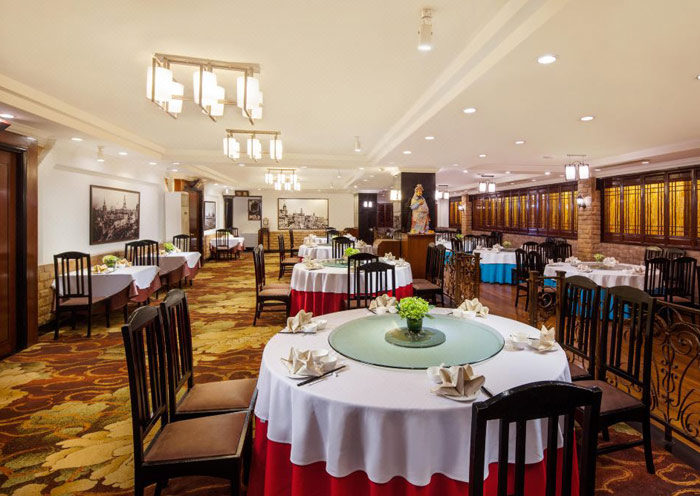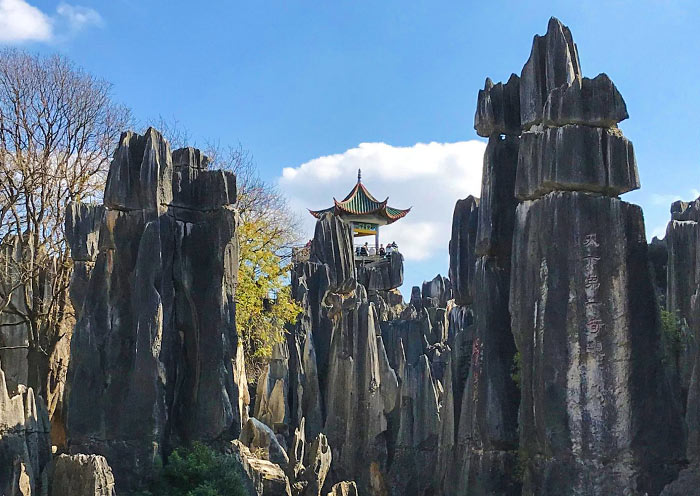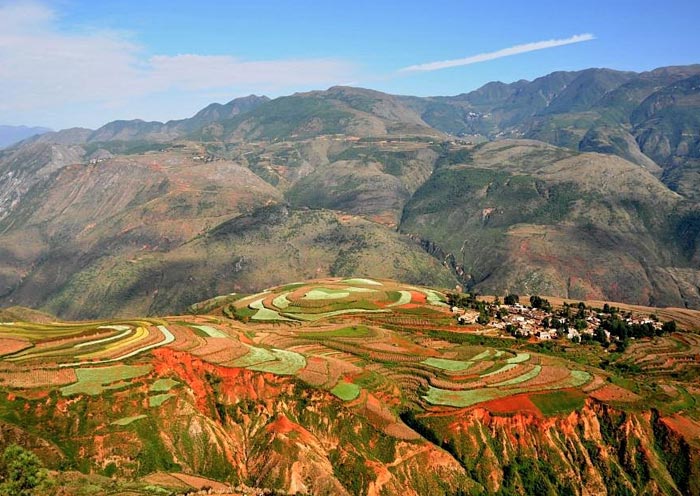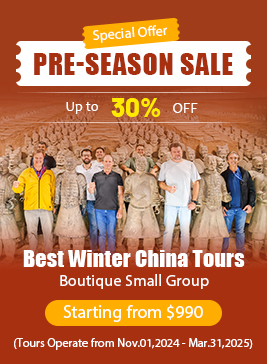This morning, you will enjoy a half-day tour around Jianshui for Double Dragon Bridge (Twin Dragon Bridge), Tuanshan Village before heading back to Kunming.
You will first visit Double Dragon Bridge (Shuanglong Bridge), an iconic landmark in Jianshui. It is recognized as one of the ten great ancient bridges in China. Twin Dragon Bridge (双龙桥) derives its name from spanning the confluence of the Lujiang River and the Tachong River, symbolizing "locking the twin dragons with a single bridge". It is also known as the Seventeen-Arch Bridge (十七孔桥), one of the only two such bridges in China, the other being the Seventeen-Arch Bridge in Beijing's Summer Palace. You will notice that when counting from either end of the bridge towards the center, the largest arch is always the ninth (8+1+8=17), representing royal elegance and the reverence ancient people held for the number nine.
Built during the Qing Dynasty in the reign of Emperor Qianlong (1736-1796), the Twin Dragon Bridge is made up of over 500 huge stone blocks, with a width ranging from 3 to 5 meters and a total length of 148 meters. At each end of the bridge, there are pavilions, and the largest pavilion located in the middle, captivating scholars from both China and abroad with its traditional Han-style architecture. The carvings on the bridge and pavilions are exquisite and intricate, featuring a variety of patterns including dragons, phoenixes, lions, elephants, and other auspicious symbols, as well as flowers, fish, insects, and other elements that are worth stopping to admire.
For Architecture enthusiasts, don't miss out on a visit to the Tuanshan Local Resident Complex (团山民居). From the layout of ancient Chinese buildings to the principles of feng shui (风水), you will experience the wisdom of ancient Chinese philosophy and the unique charm of traditional culture. Located in Tuanshan Village, Tuanshan Local Resident Complex, with a history of over 600 years, is listed in the World Monuments Fund (WMF) as a protected site of commemorative architectural heritage. It is an ecologically preserved village that showcases the architectural features of the 19th century.
Tuanshan Local Resident Complex consists of 16 traditional residential houses, 4 village gates, 3 temples, and 1 ancestral hall. The buildings include traditional Han-style brick courtyard houses, Yi-style earthen houses, and a combination of Han-Yi-style tiled roof earthen houses. Most of these old houses are still inhabited by descendants of the original owners, retaining the authentic atmosphere of daily life. Among them, Zhang Family Garden (which rivals Zhu Family Garden in its exquisite beauty; with 21 courtyards and 119 rooms), General's Residence, Huang'en Mansion, Dacheng Temple, and Zhang Ancestral Hall are all worth visiting.
It is optional to take a tourist slow train of Jianshui (self-pay) to explore the two must-visit places mention above. Jianshui Small Train is the first privately owned railway in China, established in 1915. It is known as the "Meter-Gauge Railway" due to its track gauge of 1 meter. This railway preserves a section of the historic Dian-Yue Railway built by the French over 100 years ago.
Since 2015, the Jianshui Sightseeing Small Train has been the highlight of Jianshui. The total distance is approximately 13 kilometers (4 stations) and the round trip takes about 4 hours (including the visiting time at each station). Enjoy a slow train journey (25km/h) to admire the pure Chinese-style architecture, pure French-style architecture, and the fusion of Chinese & Western elements in the stations while enjoying the picturesque rural scenery along the way, such as rapeseed flowers in spring and lush green seedlings in summer. You will find that the carriages that once transported important goods a hundred years ago now carry people's memories of that era.
Notes for Jianshui Small Train Schedule (no stop on the return trip):
1.Non-holidays (two trains per day): 9:00, 14:30
2.Holidays (three trains per day): 8:00, 12:00, 16:00
3.It is a popular attraction, train tickets need to be booked in advance
Station Schedule of Jianshui Small Train
1).Lin'an Station临安站
Departure: 9:00 AM / 2:30 PM
2.Shuanglong Bridge Station双龙桥站
Arrival: 9:20 AM, 30-minute stop, departure at 9:50 AM
Arrival: 2:50 PM, 30-minute stop, departure at 3:20 PM
3).Xianghui Bridge Station乡会桥站
Arrival: 10:00 AM, 20-minute stop, departure at 10:20 AM
Arrival: 3:30 PM, 20-minute stop, departure at 3:50 PM
4).Tuanshan Station团山车站
Arrival: 10:30 AM, 2.5-hour stop, return trip at 1:00 PM
Arrival: 4:00 PM, 1.5-hour stop, return trip at 5:30 PM
After the tour in Jianshui, head back to Kunming and have a good rest.

